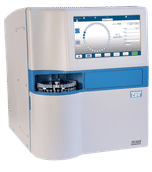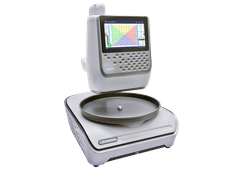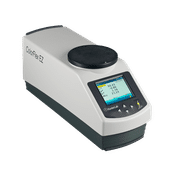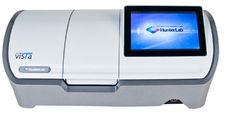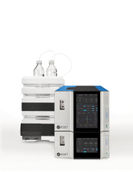MOS-500 Spektrometer
MOS-500: A CD spectropolarimeter optimized for both steady state and rapid kinetics applications

Circular Dichroism (CD) is the most commonly employed chiroptical technique for the characterization of biomolecules and the analysis of chiral substances. The far-UV Circular Dichroism spectrum of proteins reveal important characteristics relating to their secondary structure, e.g. the percentage of alpha helix, beta-sheet or beta-turns conformation. Near-UV provides information about the direct surrounding environment of the chiral chromophores. Visible and NIR-CD spectroscopy is useful to study metal-protein interactions and to resolve individual d–d electronic transitions, and has proven to be a performant tool for enantiomeric excess determination in asymmetric synthesis. By standard, the MOS-500 offers a large range of detection techniques (absorbance, fluorescence, fluorescence anisotropy, linear dichroism, FD-CD) and can accommodate a large range of accessories to extend its standard specifications and to accept different types of liquid or solid samples. Single and multiple cell Peltier controller are available for temperature stability studies.
Request information about MOS-500 Spektrometer now

Polarimeters: MOS-500 Spektrometer
MOS-500: A CD spectropolarimeter optimized for both steady state and rapid kinetics applications
Product classification MOS-500 Spektrometer
Product categories
Applications
Manufacturers of similar products
Find more polarimeters and related products
Find MOS-500 Spektrometer and related products in the theme worlds
Topic world Protein analytics
Protein analytics provides a deep insight into these complex macromolecules, their structure, function and interactions. It is essential for discovering and developing biopharmaceuticals, understanding disease mechanisms, and identifying therapeutic targets. Techniques such as mass spectrometry, Western blot and immunoassays allow researchers to characterize proteins at the molecular level, determine their concentration and identify possible modifications.

Topic world Protein analytics
Protein analytics provides a deep insight into these complex macromolecules, their structure, function and interactions. It is essential for discovering and developing biopharmaceuticals, understanding disease mechanisms, and identifying therapeutic targets. Techniques such as mass spectrometry, Western blot and immunoassays allow researchers to characterize proteins at the molecular level, determine their concentration and identify possible modifications.

